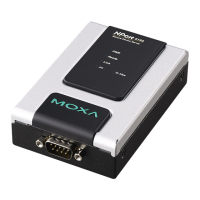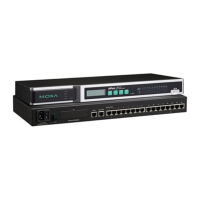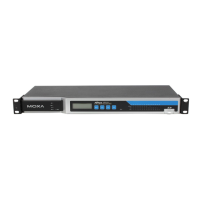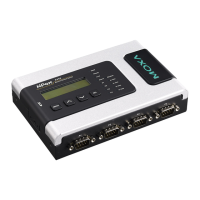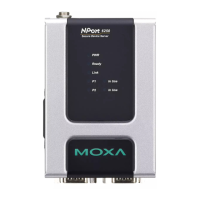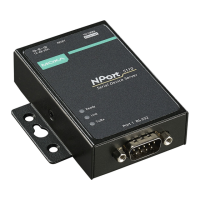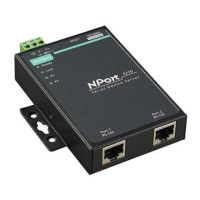NPort 6000 Series Module Settings
What happens if a link failure is detected? As shown in next figure, the STP process reconfigures the network
so that traffic from LAN segment 2 flows through Bridge B.
STP will determine which path between each bridged segment is the most efficient and then assign a specific
reference point on the network. When the most efficient path has been identified, the other paths are blocked.
In the above three figures, STP first determined that the path through Bridge C was the most efficient, and as
a result, blocked the path through Bridge B. After the failure of Bridge C, STP reevaluated the situation and
opened the path through Bridge B.
How STP Works
When enabled, STP determines the most appropriate path for traffic through a network. The way it does this is
outlined in the sections below.
STP Requirements
Before STP can configure the network, the system must satisfy the following requirements:
• Communication between all the bridges. This communication is carried out using Bridge Protocol Data Units
(BPDUs), which are transmitted in packets with a known multicast address.
• Each bridge must have a Bridge Identifier that specifies which bridge acts as the central reference point, or
a Root Bridge, for the STP system—bridges with a lower Bridge Identifier are more likely to be designated
as the Root Bridge. The Bridge Identifier is calculated using the MAC address of the bridge and a priority
defined for the bridge. The default priority of the NPort 6000 series is 32768.
• Each port has a cost that specifies the efficiency of each link. The efficiency cost is usually determined by
the bandwidth of the link, with less efficient links assigned a higher cost.
Bridge B
Bridge C
LAN 1
LAN 2
LAN 3
Bridge A
Bridge B
Bridge C
LAN 1
LAN 2
LAN 3
Bridge A
